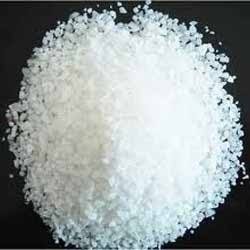Introduction
Hot rolling mills play a crucial role in the steel production process, shaping solid metal into various forms. To ensure the precise thickness of the rolled metal, manufacturers rely on advanced technology known as a Gauge Control System. In this article, we delve into the world of Gauge Control Systems, exploring how they work, their advantages, and potential disadvantages.
What is a Gauge Control System in Hot Rolling Mill?
A Gauge Control System is a sophisticated automation technology integrated into hot rolling mills, enabling steel manufacturers to maintain accurate thickness measurements as the metal passes through the rolling process. It consists of sensors that measure the material’s thickness in real-time, feeding data to a computerized control system, which then adjusts the mill parameters accordingly.
How Does a Gauge Control System Work?
The Gauge Control System comprises three key components: sensors, control algorithms, and actuators.
- Sensors: These high-precision devices capture real-time thickness measurements as the metal sheet passes through the rolling process. The sensors constantly relay data to the control system, ensuring precise monitoring of thickness deviations.
- Control Algorithms: The control algorithms interpret the sensor data and calculate the required adjustments to maintain the desired thickness. These algorithms analyze multiple variables, such as the speed of the rolling mill, tension, temperature, and other critical parameters.
- Actuators: Actuators are responsible for adjusting the mill’s parameters based on the control algorithms’ calculations. These adjustments can include modifying mill speed, roll gap, or hydraulic pressure to conform to the specified thickness.
Advantages of Gauge Control System in Hot Rolling Mill
The implementation of Gauge Control Systems brings numerous benefits to hot rolling mills, revolutionizing steel production. Some significant advantages include:
- Enhanced Precision: By continuously monitoring thickness measurements, Gauge Control Systems allow manufacturers to achieve unparalleled precision, ensuring the final product meets the tightest tolerances and customer specifications.
- Increased Efficiency: Gauge Control Systems optimize the rolling process, eliminating the need for manual adjustments and reducing material waste. The automation ensures a streamlined operation, maximizing productivity without compromising quality.
- Improved Product Quality: With real-time feedback and adjustments, Gauge Control Systems minimize the risk of thickness variations and inconsistencies. This results in superior product quality, reducing the need for costly rework and improving customer satisfaction.
- Reduced Downtime: Unplanned downtime can be detrimental to any manufacturing process. The advanced monitoring capabilities of Gauge Control Systems enable early detection of potential issues, allowing for prompt maintenance and minimizing production interruptions.
- Data Analysis and Reporting: Gauge Control Systems collect a plethora of data during the rolling process. Manufacturers can leverage this data for comprehensive analysis and reporting, identifying trends, optimizing procedures, and enhancing overall mill performance.
Disadvantages of Gauge Control System in Hot Rolling Mill
While Gauge Control Systems offer significant advantages, it is important to acknowledge their potential limitations. These include:
- Initial Cost: Implementing a Gauge Control System requires a significant upfront investment. The cost of sensors, control algorithms, actuators, and the integration process can be substantial. However, the long-term benefits often outweigh the initial expenditure.
- Maintenance and Upkeep: Like any advanced technology, Gauge Control Systems require periodic maintenance and software updates. Manufacturers need to allocate resources and personnel to ensure the system’s optimal performance throughout its lifespan.
- Complexity: Gauge Control Systems operate using intricate algorithms and automation. This complexity might pose challenges for staff members who must undergo training to effectively operate and maintain the system.
- Compatibility Issues: Integrating a Gauge Control System into an existing hot rolling mill may encounter compatibility issues with legacy equipment. Proper planning and implementation strategies are necessary to overcome these potential hurdles.
Conclusion
Gauge Control Systems have revolutionized the steel production process, ensuring precise thickness measurements and enhancing overall efficiency and product quality. Despite some potential drawbacks, the benefits of Gauge Control Systems far outweigh the disadvantages, making them an indispensable tool for modern hot rolling mills. As steel manufacturers strive for excellence, the adoption of Gauge Control Systems is a necessary step forward.




